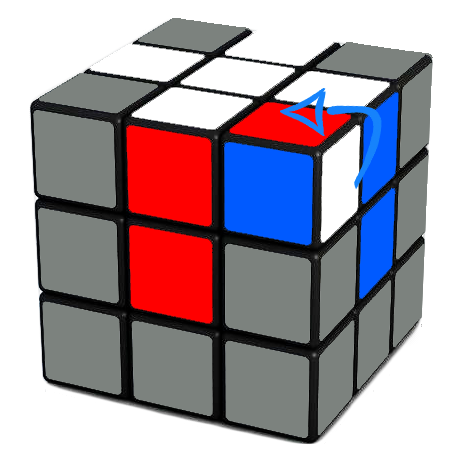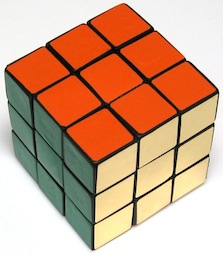

Magic Cube was held together with interlocking plastic pieces that prevented the puzzle from being easily pulled apart, unlike the magnets in Nichols's design. The first test batches of the Magic Cube were produced in late 1977 and released in Budapest toy shops. Rubik applied for a patent in Hungary for his "Magic Cube" ( Hungarian: Bűvös kocka) on 30 January 1975, and HU170062 was granted later that year. He did not realise that he had created a puzzle until the first time he scrambled his new Cube and then tried to restore it. Although it is widely reported that the Cube was built as a teaching tool to help his students understand 3D objects, his actual purpose was solving the structural problem of moving the parts independently without the entire mechanism falling apart. In the mid-1970s, Ernő Rubik worked at the Department of Interior Design at the Academy of Applied Arts and Crafts in Budapest. Packaging of Rubik's Cube, Toy of the year 1980 – Ideal Toy Corp., made in Hungary On early cubes, the position of the colours varied from cube to cube. Since 1988, the arrangement of colours has been standardised with white opposite yellow, blue opposite green, and orange opposite red, and the red, white, and blue arranged clockwise in that order. Some later versions of the cube have been updated to use coloured plastic panels instead, which prevents peeling and fading. On the original classic Rubik's Cube, each of the six faces was covered by nine stickers, each of one of six solid colours: white, red, blue, orange, green, and yellow. The Rubik's Cube was inducted into the US National Toy Hall of Fame in 2014.

As of January 2009, 350 million cubes had been sold worldwide, making it the world's bestselling puzzle game and bestselling toy. It won the 1980 German Game of the Year special award for Best Puzzle. The cube was released internationally in 1980 and became one of the most recognized icons in popular culture. Originally called the Magic Cube, the puzzle was licensed by Rubik to be sold by Pentangle Puzzles in the UK in 1978, and then by Ideal Toy Corp in 1980 via businessman Tibor Laczi and Seven Towns founder Tom Kremer. Simply do a middle slice along any face, then keep one corner fixed in your mind relative to the three virtual centers (i.e., keep it in the same place relative to them), and solve the cube again.The Rubik's Cube is a 3-D combination puzzle originally invented in 1974 by Hungarian sculptor and professor of architecture Ernő Rubik.

This algorithm moves them back into a legal position, and, though it disrupts a couple edges in the process, actually allows you to solve it regularly again. (Note: a position which is mathematically equivalent to the one you are in is where two corners are swapped if you end here, you're in literally the exact same position.) You'll find yourself in an equivalent position on the 3x3.

To see for yourself why this might be, attempt to solve a regular Rubik's cube with one row of centers rotated 90 degrees. In the case you're seeing, the centers along one axis have been rotated 90 degrees out of position. When the 'virtual' centers are rotated incorrectly - that is to say, you're attempting to solve the cube around an invalid position - the pieces won't line up. However, it's important to bear in mind that they're actually still there, just hidden. You, as you know, can no longer see the centers on the void cube. The algorithm to take you out of this position is M' U M' U' M U' M U2 M' - then you just solve the remaining edges as-is, and I'm going to attempt to briefly explain why this works. When you work with a void cube, you've de facto lost a degree of visibility.


 0 kommentar(er)
0 kommentar(er)
